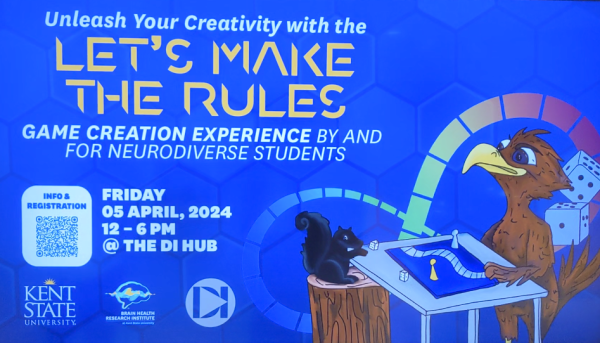‘Healthy hookup’ kits offer break safety
March 21, 2006
Mints, condoms and tips for how to have a safe and healthy Spring Break were distributed last night in the Healthy Hookup Kits at the Your Spring Break presentation.
The event, held in the Student Center Ballroom, featured three co-presenters: Hilda Pettit, coordinator of the Women’s Resource Center; Deborah Neuhart, emergency services manager for Townhall II; and Scott Dotterer, coordinator of the Office of Health Promotion in the DeWeese Health Center.
The speakers gave advice about how to exercise sexual and alcohol safety next week when students venture off campus for Spring Break.
Pettit said talking to a partner about his or her sexual history is vital in prevention of spreading STDs.
When you don’t want to partake in sexual activity, say “no” clearly and with conviction, she said. Miscommunication is a dangerous possibility that can lead to sexual assault.
“If a person is drunk, consent is not assumed,” Pettit said. “In Ohio, you can be convicted of sexual assault.”
Spring Break is an opportunity to make good choices about alcohol, driving and personal health safety, and most students going on Spring Break will be smart about their behaviors, Dotterer said.
Most college students that are going on Spring Break are involved in risk decision-making, he said. The norm is not partying out of control to the point where students are risking their safety. Instead, it’s being proactive about personal safety, he said.
“Researchers say most college students are not abusing alcohol, and 96 percent of KSU students overestimate how much their peers are drinking,” Dotterer said. “If you could correct this misconception, risks could be lowered.”
Chris Hehemann, junior chemistry major, said he “was especially surprised by the number of students who overestimate how much their friends drink. I’ll remember that when I’m in Orlando over break.”
Dotterer also offered some suggestions about how to recognize symptoms of alcohol poisoning. He said shallow breathing, a cool, clammy skin temperature and various levels of unconsciousness are symptoms that could justify seeking medical attention.
A safe Spring Break is possible if you respect yourself, your friends and the laws, the speakers said.
“The goal that I have for the event tonight is to give the students some tools and information so that they can go and have a happy and safe Spring Break,” Pettit said. “Wejust want them to return safely.”
Contact College of Architecture and Environmental Design and School of Art reporter Shauna Stottsberry at [email protected].
























